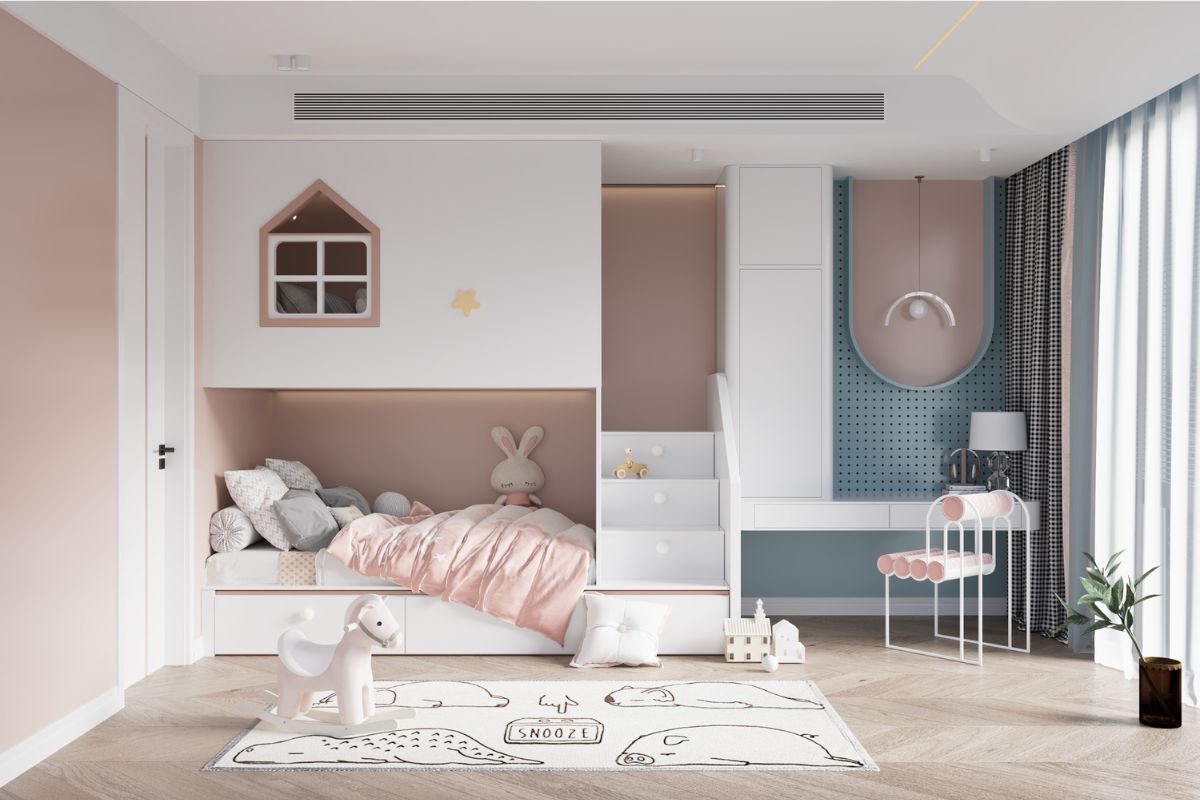Creating a kid’s room that balances safety, functionality, and fun can seem like a daunting task. However, with the right approach, you can design a space that not only meets your child’s needs but also encourages their development and creativity. Here are nine ways to achieve this perfect balance in your child’s room.
Prioritize Safety in Every Aspect
Safety should always be the top priority when designing a kid’s room. Ensure all furniture is sturdy and anchored to the wall to prevent tipping. Cover electrical outlets and keep cords out of reach to avoid accidents. When selecting toys and decor, opt for non-toxic materials and avoid small parts that could be choking hazards.
Choose Adaptable Furniture
Invest in furniture that can grow with your child. Adjustable desks and chairs, convertible cribs, and dressers that can double as changing tables are excellent choices. This not only saves money in the long run but also ensures the room evolves with your child’s changing needs. Bunk beds are also a fantastic adaptable and space-saving solution for siblings sharing a room or for sleepovers.
Remember to consider bunk bed dimensions to ensure they fit comfortably in the room without compromising safety or functionality. Make sure there’s ample space between the top bunk and the ceiling to prevent bumps and provide enough room for easy access.
Maximize Storage Solutions
Kids come with a lot of stuff, from toys and books to clothes and sports equipment. Incorporate plenty of storage solutions like under-bed containers, shelving units, and toy chests to keep the room organized and clutter-free. Labeling bins and baskets can also help your child learn where items belong, making cleanup easier.
Create a Dedicated Play Area
Designate a specific area of the rooms for play. This can be as simple as a comfortable rug with storage bins for toys or a more elaborate setup with a playhouse or tent. Having a dedicated play area encourages imaginative play and helps keep the rest of the room tidy.
Dedicate a Learning Corner
A learning corner equipped with a small desk or table, comfortable seating, and accessible storage for books and art supplies can inspire creativity and study habits. Decorate the learning center with your child’s artwork and educational posters to make learning fun and engaging.
Ensure Proper Lighting
Good lighting is crucial in a kid’s room. Include a combination of overhead lighting, task lighting for reading or homework, and nightlights to provide comfort after dark. Natural light is also important, so keep window areas clear of furniture to let in as much sunlight as possible.
Incorporate Their Interests
Involve your child in the decorating process by incorporating their interests and favorite colors into the room’s theme. Whether it’s dinosaurs, space, princesses, or sports, a room that reflects their personality will feel special and inviting. Of course, you’ll have to get your children talking and get to know them better.
Keep the Room Flexible
Children’s tastes and interests can change quickly, so design a room that’s easy to update. Use neutral colors on walls and floors and add pops of color with easily changeable items like bedding, curtains, and wall art. This allows the room to evolve without the need for a complete overhaul.
A Room That Grows With Them
Designing a kid’s room with safety, functionality, and fun in mind creates a space where children can play, learn, and rest. With these nine tips, you’ll create a room that not only meets your child’s needs today but also adapts to their growth and changing interests, providing a comfortable and inspiring space for years to come.
















